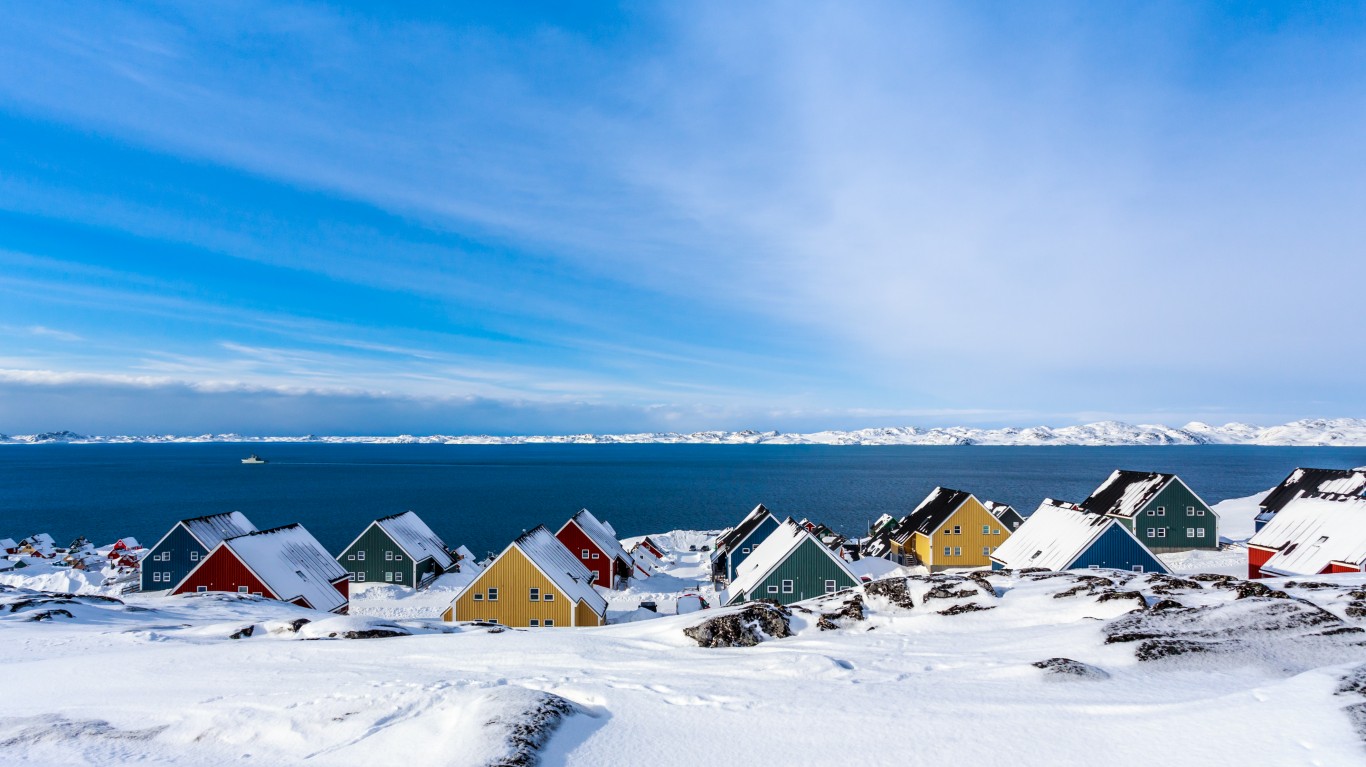
Of the 7.9 billion people in the world, some live in terribly crowded areas and some others in areas so remote they may not see other humans regularly. The U.S is a microcosm of this. New Jersey’s density is 1,210 people per square mile. In areas in and around New York City, the figure is over 50,000. Alaska’s is 1.3.
Even less densely populated than Alaska is Greenland, with less than 1 person per square mile. The island nation is the least densely populated country in the world. (On the flip side, this is the most densely-populated city in the world.)
There are 57.3 million square miles of land on Earth, yet 95% of the planet’s human population inhabits only 10% of that land, according to the World Bank. What about the other 90% of the land? How sparsely populated are these parts, and where are they?
To identify the least densely populated country on Earth, 24/7 Wall St. reviewed population density data from the World Bank for about 270 countries. Information on land area came from the Food and Agriculture Organization of the United Nations. Some of the least densely-populated countries are also among the 25 largest countries in the world.
Climate and geography play a significant role in population density. The most sparsely populated areas on Earth tend to be those with limited access to freshwater, including deserts and arctic zones, as well as those with dense impassable rain forests, rugged mountains, or those isolated from continental zones by miles of ocean.
In Greenland, the population of 56,367 spreads over 158,476 square miles. But about 80% of those are covered by a massive glacier. The country’s arctic and subarctic temperatures range from the 30s to the 50s in the summer and are consistently below zero in the winter. Most of the population live on the southwest coast, which has the mildest climate.
Click here for the least densely populated countries in the world





